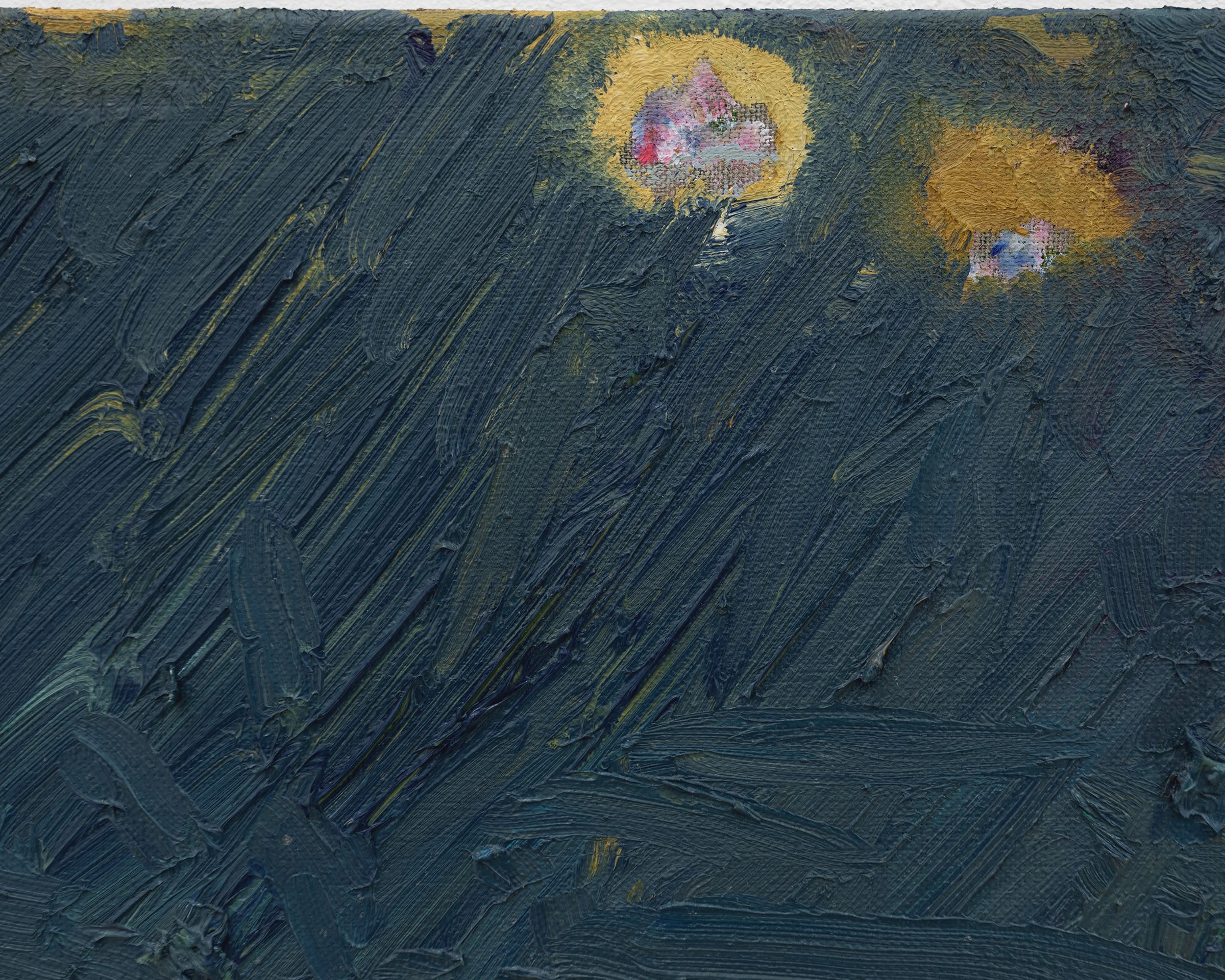 Portrait of Oskar Hult. Courtesy of the artist and OTP Copenhagen.
Portrait of Oskar Hult. Courtesy of the artist and OTP Copenhagen.
OTP: In the past you worked with different scales, but more recent works tend towards small formats, could I ask you to talk a little bit about that?
OH: For several years, I worked almost exclusively in two formats—one roughly the size of a body and one roughly the size of a head. These formats seemed to connect well. The smaller works often ended up in, on, or next to the larger paintings. Even then, I think I saw the paintings as building blocks for something bigger. Fragments for something beyond.
In recent years, I’ve found it more difficult to take on slightly larger formats. I think this also has to do with the shift to a landscape orientation. When a painting is lying down, it suddenly feels so much bigger. It’s no longer my body responding to the format—it’s as if the format has the upper hand.
Since I work without sketches or set plans, the small formats have been easier to nurture. At the same time, they’re becoming more and more stretched out—almost like panoramas.
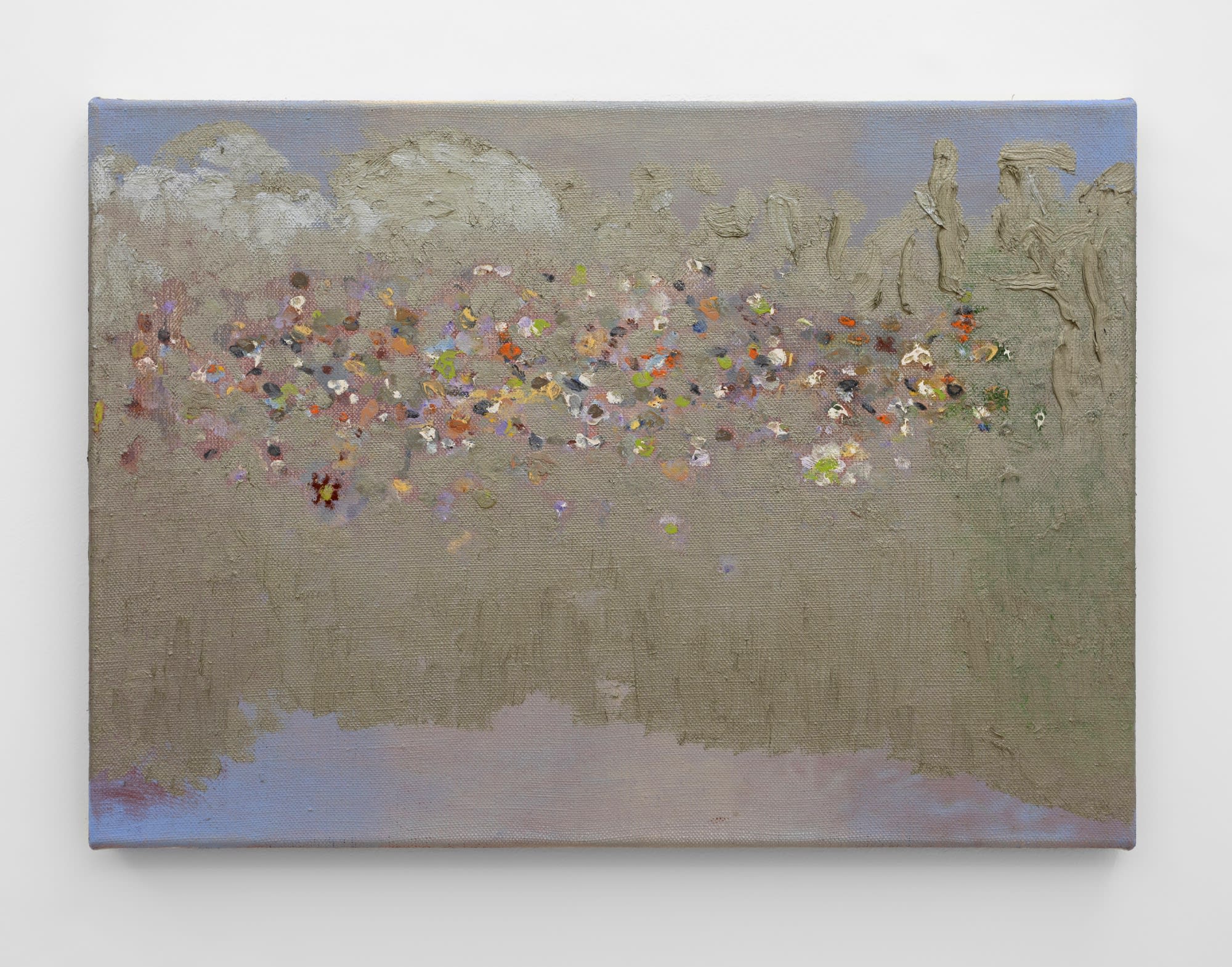 Oskar Hult, Utan Titel [Untitled], 2024, oil on canvas, silver pigment, 33 x 46 cm / 13 x 18.1 in. Courtesy of the artist and OTP Copenhagen.
Oskar Hult, Utan Titel [Untitled], 2024, oil on canvas, silver pigment, 33 x 46 cm / 13 x 18.1 in. Courtesy of the artist and OTP Copenhagen.
OTP: To what extent do the environments in your work identify with a Swedish tradition of landscape painting do you think?
OH: I don’t really see myself as a traditional landscape painter, even though that’s what my paintings might represent. It’s often pure abstraction that is disrupted by a few marks—maybe a couple of dots placed just close enough together that you can’t help but read them as flowers. The whole abstract form then starts functioning as a kind of space, and the painting dissolves its own boundaries and start to express itself in another direction. It is as if the landscapes already exist in the margins. In the borders and edges of the painting. The edges of the painting are something that never ceases to fascinate me.
That being said, my landscapes don’t have a model. Theres no references.They only come into existence when brush meets canvas, through color and movement. I never set out to paint a landscape—it’s more like it undergoes some kind of metamorphosis.
The curator Ashik Zaman once wrote about me, calling me an "involuntary landscape painter." I really liked that description.
Of course, there are parallels to art history, but I wouldn’t say that Swedish landscape painting is a dominant reference for me. My grandfather was an untrained summer painter who depicted trees and coastal landscapes. Those paintings have always circulated in the family. That's my base. Though a Helmer Osslund is also never wrong.
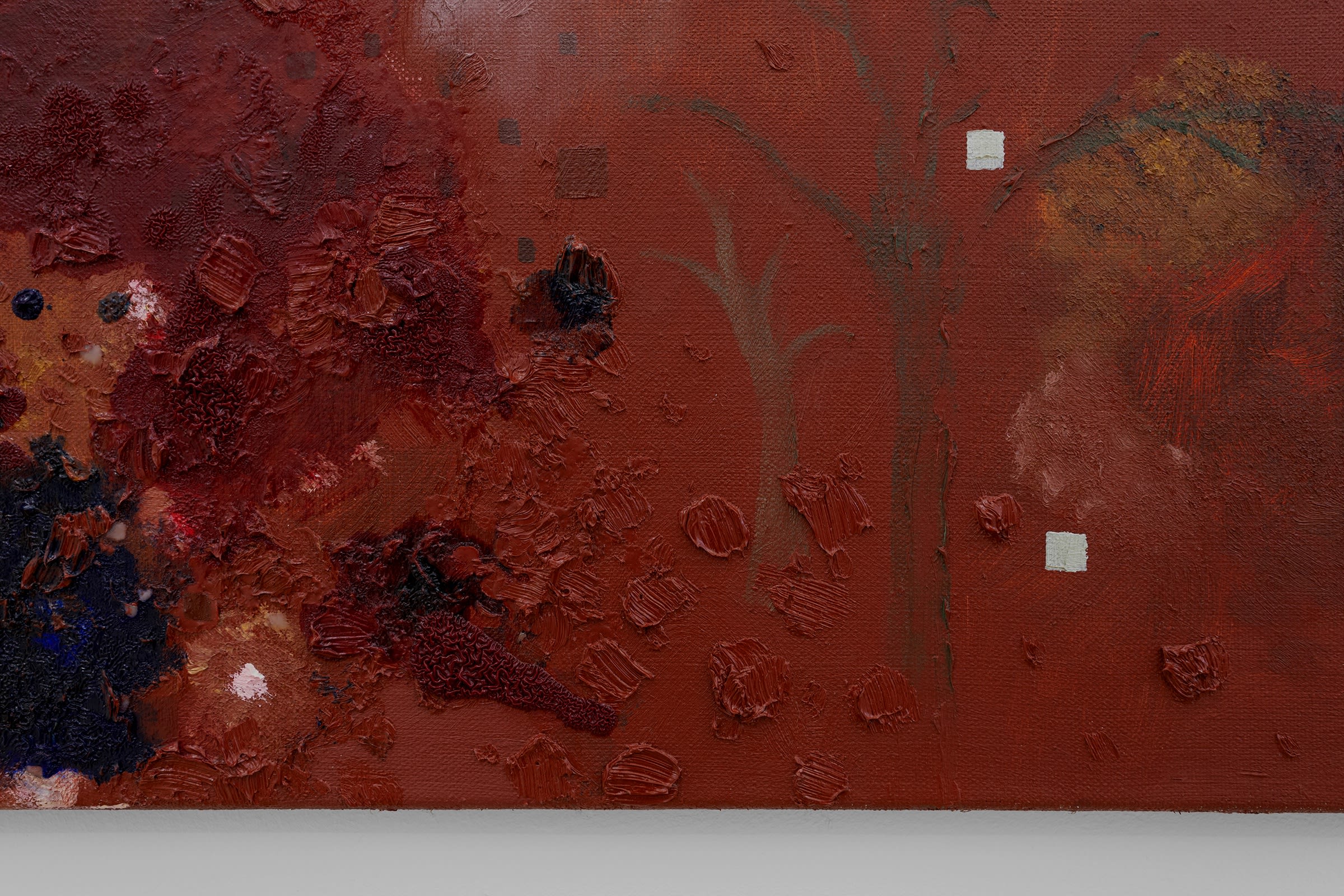
Oskar Hult, Rött landskap [Red Landscape], 2024 (detail), oil on canvas, 33 x 51 cm / 13 x 20 in. Courtesy of the artist and OTP Copenhagen.
OTP: I know that poetry and the poems of Inger Christensen have informed the titles of works in the past. To what extent is your work influenced by literature? Are you interested in ideas of ‘the poetic?
OH: Literature, text, and poetry act as dialogue partners in the studio. As you mentioned, I’ve borrowed titles from Inger Christensen’s poetry, as well as from Göran Sonnevi. But I also take titles from music that’s on repeat in the studio, or from other texts I’m reading.
I think what I read influences me in deeper ways too. Sometimes, in the middle of reading a text—whether it’s about another artist or something completely unrelated—I suddenly realize what I need to do with a specific painting. Words open up pathways into the wordless.
My paintings have often been described as poetic. I think that has more to do with their fragmentation than any conscious intention on my part. I don’t think about poetry when I work—I just want the painting to work.
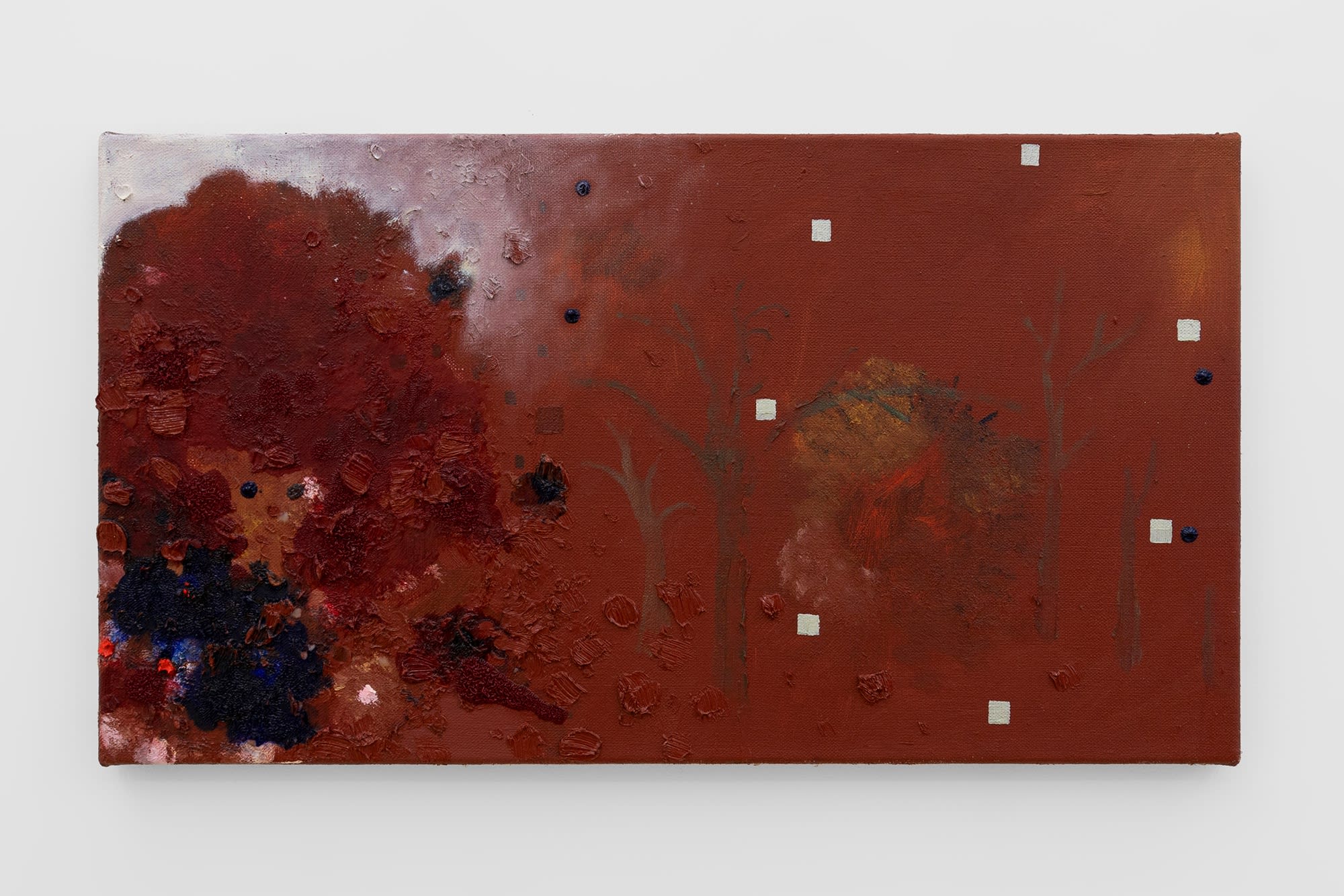
Oskar Hult, Rött landskap [Red Landscape], 2024, oil on canvas, 33 x 51 cm / 13 x 20 in. Courtesy of the artist and OTP Copenhagen.
OTP: How relevant are ideas of hiding to your works? Do you get a sense that there is something hiding in these environments?
OH: I don’t think in terms of something hiding. Rather, I try to create a state of becoming in the studio—a space where something can emerge, hover, or transition. Where it can sink into or rise out of the canvas.
Sometimes I scrape and sand away layers of paint to find what’s underneath. But it never fully reveals itself—it takes on a new form through time and layers. So I wouldn’t say it’s hidden. It’s more like something growing. As I said before, the motifs are somehow already in the canvas. Some kind of painterly archaeological process is needed to find them.
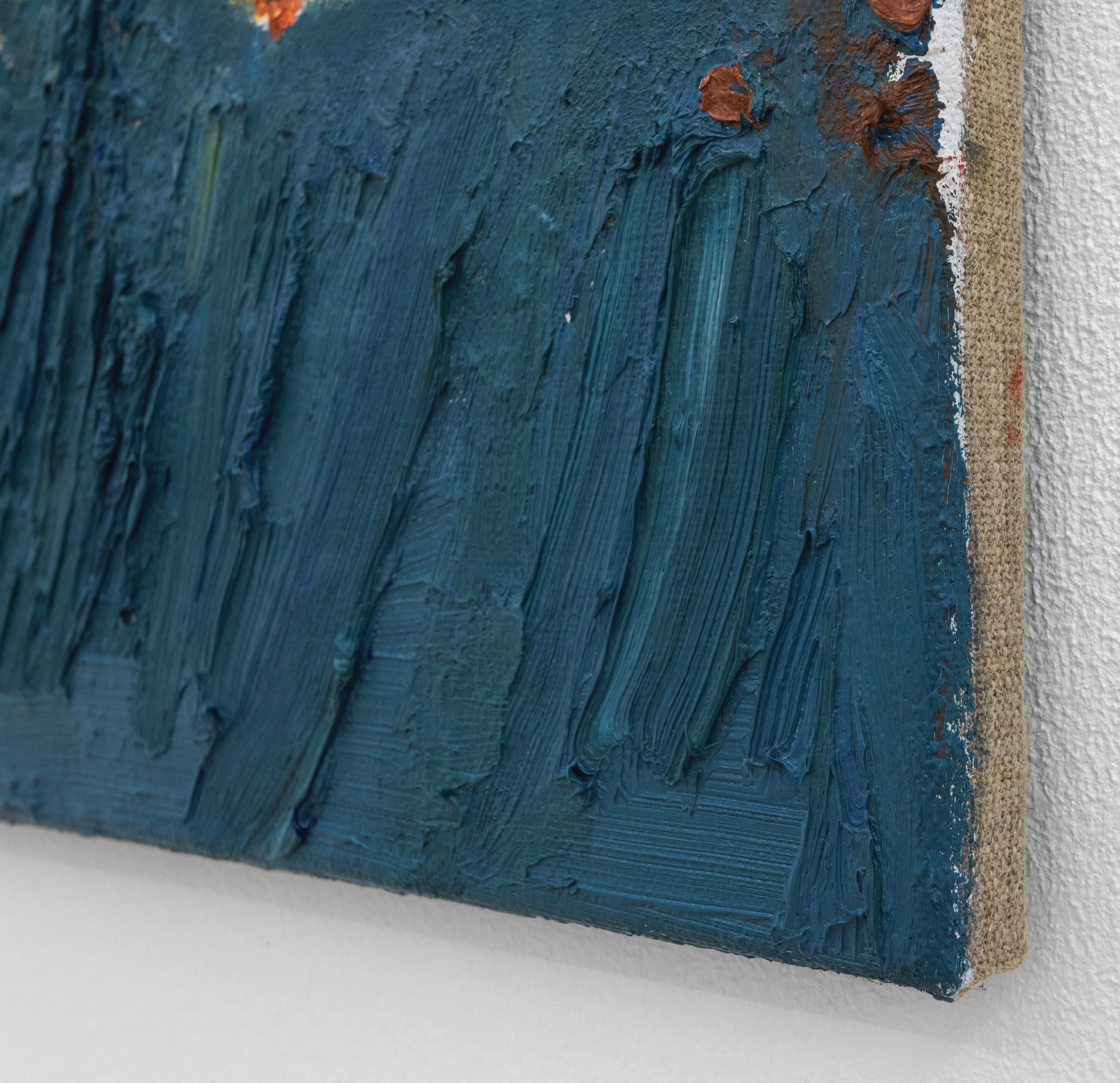
Oskar Hult, Utan Titel [Untitled], 2024 (detail), oil on canvas, 20 x 33 cm / 7.9 x 13 in. Courtesy of the artist and OTP Copenhagen.
OTP: Do you believe that each painting connects to all of the paintings that have come before it? Could I ask you to talk about the ways in which different paintings connect to or disconnect from one another?
OH: When I’m working, everything is part of an ongoing process. The paintings coexist in the space where they’re created, and nothing is really sacred or finished. If I mix a particularly good green, chances are it will find its way onto all the paintings.
The paintings talk to each other. They give and take energy from one another.
A year or so ago, I saw everything in the studio as one continuous painting. Now, I think I’m getting better at putting some paintings aside and leaving them alone—at least for a while. But they still communicate. My job is to stay as attentive as possible and follow where things are going.
Sometimes, new movements, new openings, or new colors enter the studio. I tend to get so caught up in the new that I focus only on it, which means a lot of paintings end up being destroyed. But I see it as something circular—like a gardener who, without nostalgia, prunes an apple tree so it can grow better. The discarded branches become compost for something new.
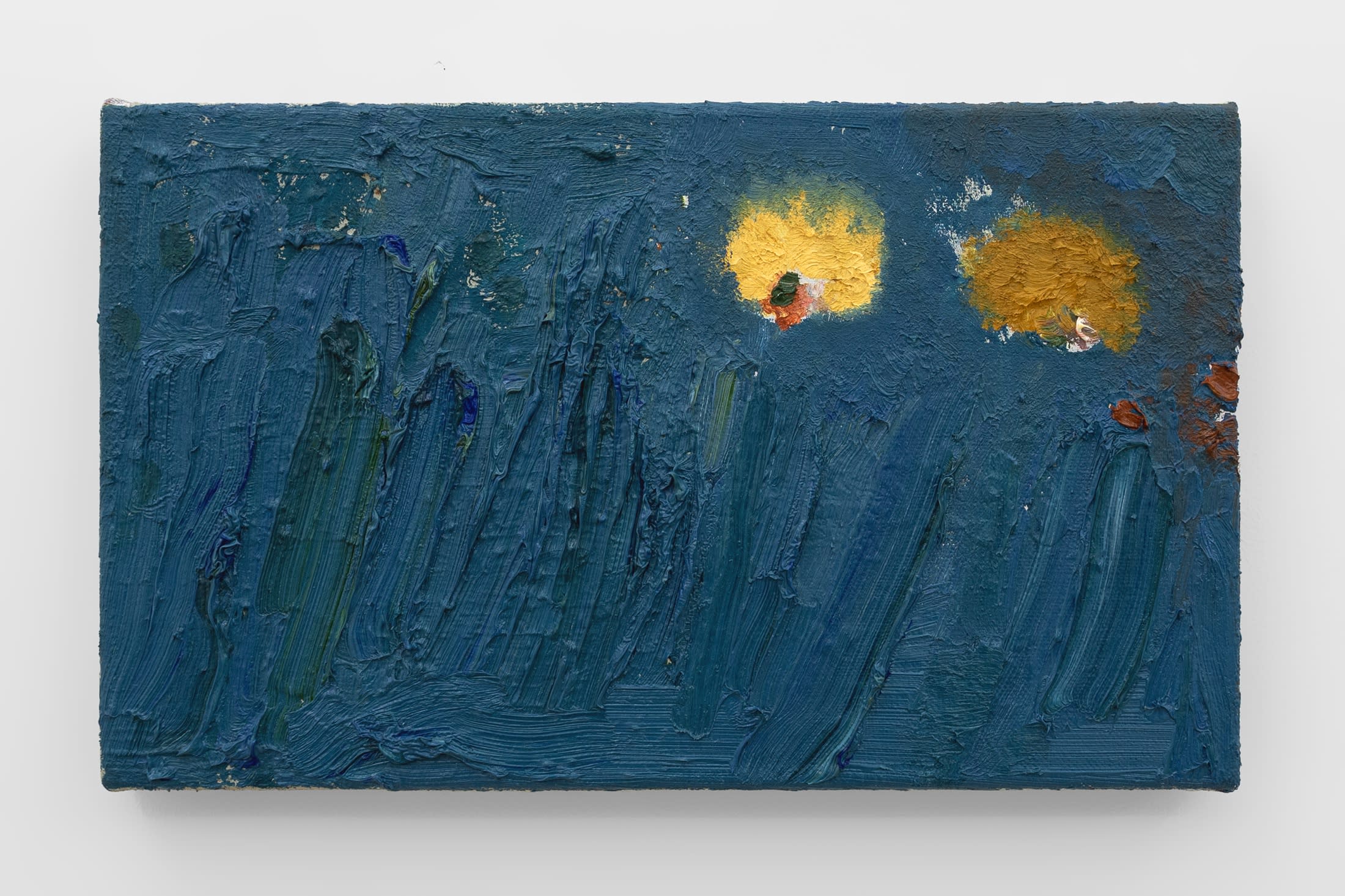
Oskar Hult, Utan Titel [Untitled], 2024, oil on canvas, 20 x 33 cm / 7.9 x 13 in. Courtesy of the artist and OTP Copenhagen.
OTP: How has teaching impacted your work inside the studio?
OH: I have taught at a number of preparatory art schools ever since I graduated from the Royal Institute of Art. Now I am back at that school as a senior lecturer in painting. Regardless of the institution, these rooms give me energy that I try to utilise in my own studio.
The desire to continue creating is probably the most important thing I take from the teaching. And a belief that things are possible. It's easy to get stuck in the same rut in your own practice and there's nothing wrong with that. But the desire and rebellion of the students I teach gives me peace of mind that my own desire or longing will never abandon me. That the drive forward only happens through the doing itself.
It is a luxury to see what a younger generation is driven by and try to support them in their ambitions.
Oskar Hult, Utan Titel [Untitled], 2024 (detail), oil on canvas, 20 x 33 cm / 7.9 x 13 in. Courtesy of the artist and OTP Copenhagen.
OTP: Are there specific projects you are working towards at the moment that you can talk about? What sort of ideas are guiding that work?
OH: I am currently working on two projects.
The first is a large-scale public commission for a hospital in Stockholm. It spans an entire floor with 24 treatment rooms and connecting corridors. The corridors will feature oil paintings in slightly varying sizes, while inside the treatment rooms, fragments of these paintings will appear—like glimpses of (or openings towards) something beyond the walls.
I’m also preparing for an exhibition in my hometown, Linköping, together with the artist Éva Mag. It feels special to finally exhibit on home ground.
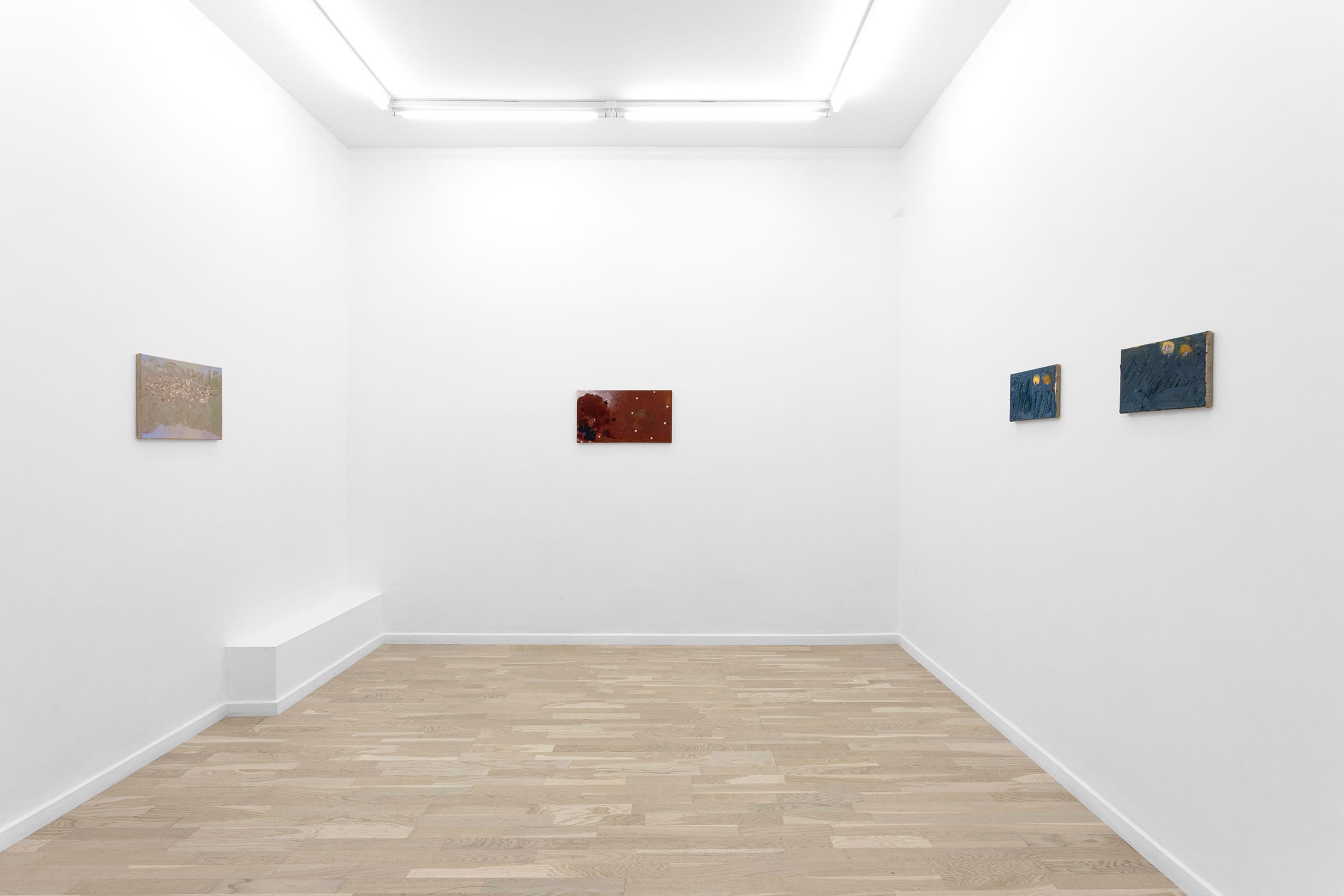
Oskar Hult, Selected Works, Installation View, 2025. Courtesy of the artist and OTP Copenhagen.
Oskar Hult (b. 1986, Linköping; SE) lives and works in Stockholm, Sweden. He graduated from the MFA programme at the Royal Institute of Art (Stockholm; SE) in 2017 after completing his BFA at the Royal Institute of Art (Stockholm; SE) in 2015.
Recent exhibitions include New Sounds at Anna Bohman Gallery (Stockholm; SE), Stuff It at Bonniers Konsthall (Stockholm; SE), Mot Dagen at Galleri Arnstedt (Östra Karup; SE). Works by the artist can be found in the permanent collection of Moderna Museet (Stockholm; SE) as well as other public collections.
